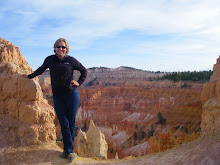Clarissa told me recently that I would be a good midwife. More specifically, she explained that if she ever found herself going into labor on a remote, deserted island for some unfathomable reason, I would be the person she'd like to have on hand. "You'd be totally competent with the blood and the umbilical cutting and all that, but you'd also say all the right things so I'd believe that everything was going to be okay."
I take that as a pretty serious compliment. Maybe the nicest thing she's ever said to me. Or a close second to the time she told me, completely in shock, that I had done a good job of choosing a new pair of jeans. But the point is that I was totally flattered by her trust in my as-yet untested baby-delivering abilities.
Then today Netflix had the impeccable timing to deliver me a documentary about delivering babies- The Business of Being Born. I think that this might be a sign. Career-change? Impending pregnant friend stranded and in need of my help? Netflix listening in on my phone calls? Definitely some kind of sign.
More importantly, it was a really fascinating documentary. It was made by Ricki Lake after her first birth, at a hospital, raised a lot of questions for her. Here in the United States, we have the most expensive births of any developed country and the highest rate of mortality in delivery for mothers and babies of the major developed nations. One in three babies is delivered via Cesarean section. Hospitals, trying to be efficient and not get sued, use all kinds of chemicals to encourage contractions, discourage pain, and hurry women into surgery.
The main premise of the film is that the medical profession, by blacklisting midwives and creating a culture of fear around birth as a health emergency, is taking away from women the ability to be truly present and in control of giving birth. That in our society- delivering a baby is not something mothers do anymore, it is something done to them. Further, the film argues, that this loss of agency in birth is an injustice; depriving mothers of an incredible emotional and physical experience and creating an unnecessarily expensive and dangerous hospital based procedure from a natural event.
It makes a pretty clear feminist statement, really, that we should trust women's bodies to give birth to babies. They have obviously evolved to do so. For money and power, we have taken something simple and natural, and made it complicated and often, more dangerous. Having a baby doesn't need to be treated like having an illness. The midwives and natural birth advocates featured in the film made the alternative, a return to more natural births, sound safe, smart, and even possible.
To it's credit, this documentary does not pretend that all births are easy and complication free. One woman had to abandon plans for a home birth for an emergency Cesarean during premature labor, but her midwife was prepared to use that option and knew when to make the call. Overall, however, statistics show that natural births with trained midwives have a higher success rate for healthy mothers and babies than hospital deliveries. Most OB/GYNs interviewed in the film admitted that they had never or hardly ever seen or assisted with a natural birth- it's that foreign of a concept in the medical world.
Unfortunately, in our increasingly complicated world of health and malpractice insurance, it's hard for many midwives and natural birthing centers to stay profitable. Even though a midwife-assisted natural birth is much more economical, the powers that be are actively resisting a shift in their status quo. One midwife pointed out that natural birth needs more press, more media attention, Angelina Jolie giving birth in her bathtub stories in the news, instead of the recent celebrity stories of elective, scheduled Cesarean. I am already convinced to try and plan for a natural birth, even without Angelina Jolie on board. Not that there are any babies on the near horizon in my life, but I certainly am better prepared to think about the situation someday.
4 years ago

